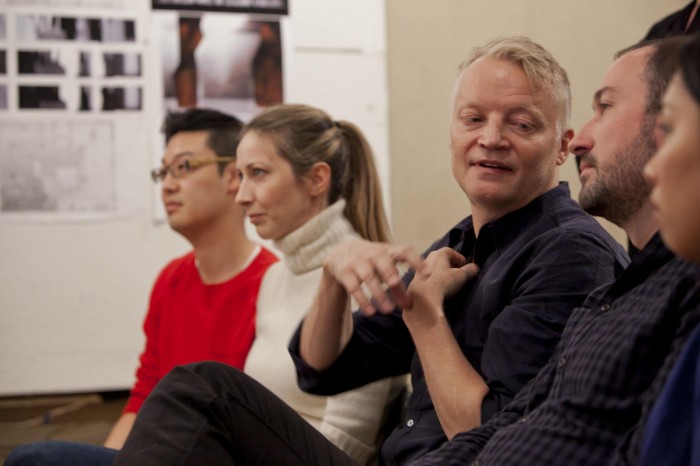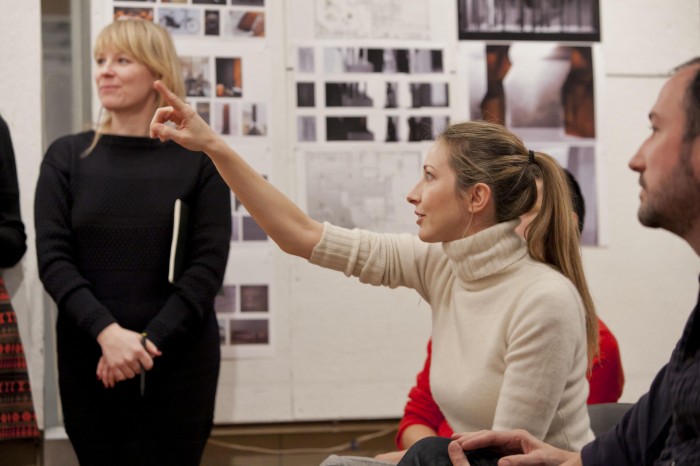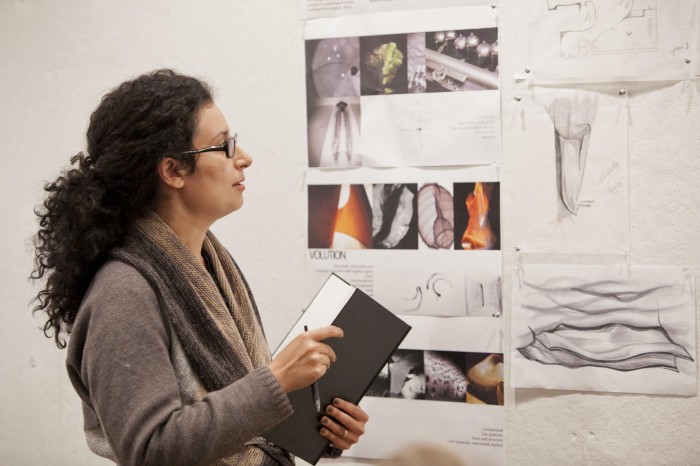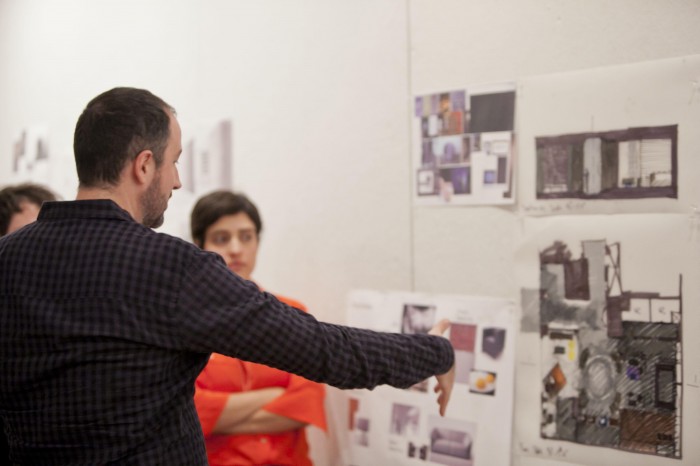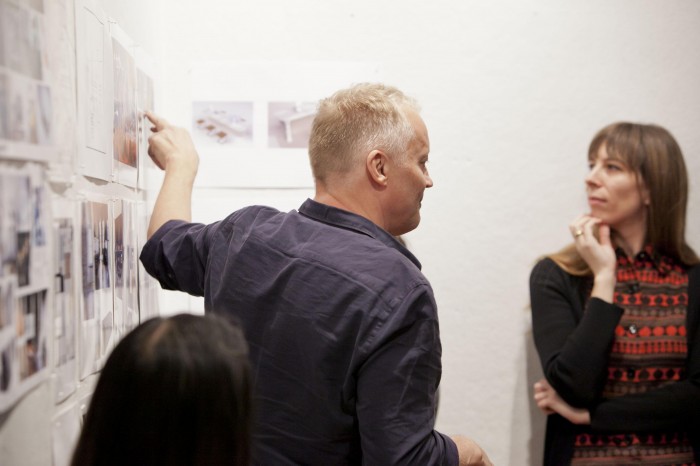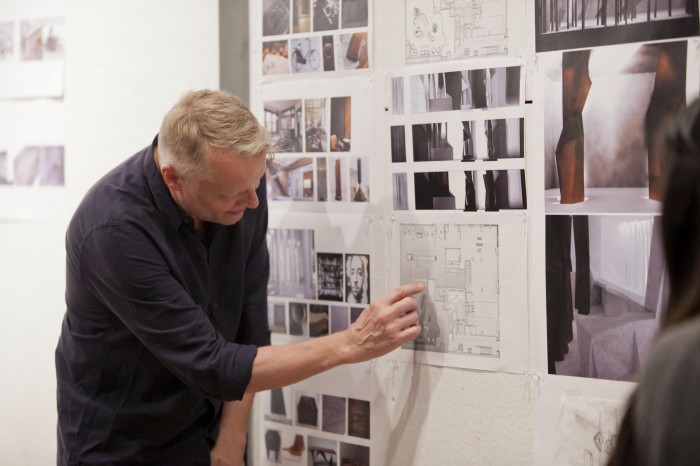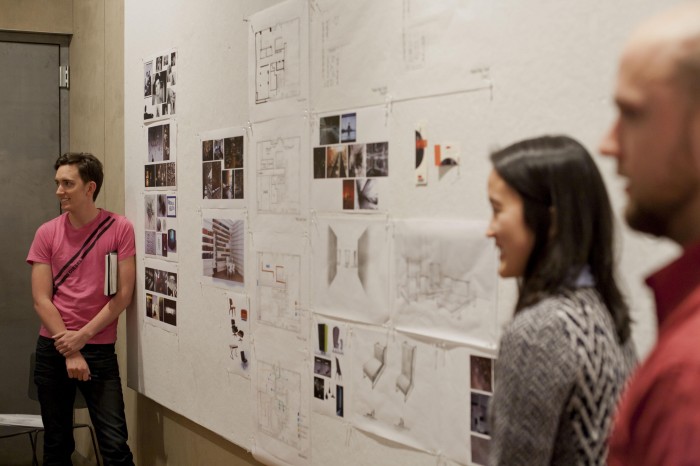SCE Students participate in charrette with Yabu Pushelberg
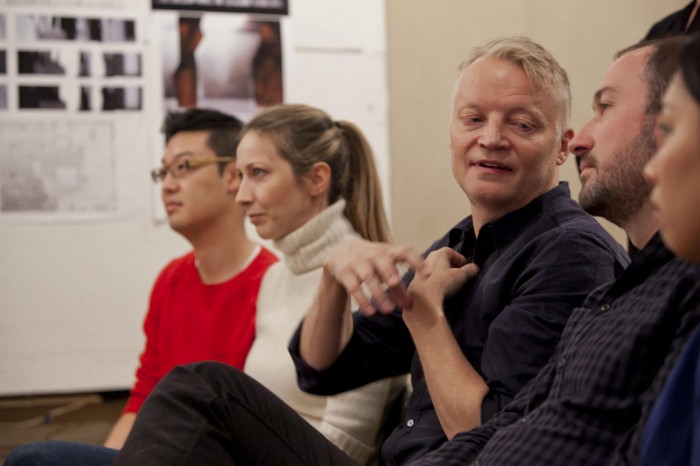
by Laura Reid
Twenty students from the School of Constructed Environments, including myself, recently participated in a weekend-long workshop with Glenn Pushelberg and a team of senior designers from the firm; Johnathan Garrison, Caroline Meersseman, Hiromi Murayama, Aldington Coombs and Joseph Kim. The event kicked off on Thursday evening, February 9, with a lecture by Glenn and his partner, George Yabu. They spoke in the Glass Corner to a full house, sharing images and anecdotes on some of their best work from around the world, including Lane Crawford in Beijing, Avenue Road in Toronto and their private residences in Toronto and New York.
In addition, they explained their process of developing a concept by creating a fictional character whose narrative could be translated into a spatial design. The workshop started with this exercise and our end-goal was to design the lobby of The Smyth, a boutique hotel in Tribeca, which was a recent project by the firm. Through an examination of the neighborhood and it’s residents, as well as the type of traveler who would prefer to stay in Tribeca over other Manhattan neighborhoods, we created an incredibly detailed identity for our characters, bringing them to life with images that portrayed their habits, lifestyles, sartorial choices, and eccentricities. These little elements would later enable us to bring a sense of playfulness to our designs, taking us beyond the traditional plans of a hotel lobby.
We were put together in teams of four, allowing for a cross-pollination of all our design disciplines: Architecture, Interiors, Lighting and Product Design. We compiled different characteristics of the persona we had each created to produce one main character. My group consisted of a product design student and two other interior designers from the BFA and MFA programs. Together we came up with Laszlo, a habitual, quirky German fashion designer from Berlin who often travels to New York for both business and pleasure. He uses his hotel to entertain his friends as he would in his own home. He also collects photography, has an espresso every morning at the same time, and only enters his pre-War apartment though the service entrance. After these details were established, we began to translate Laszlo and his daily routines into a spatial design, proposing the lobby to imitate his home and the hotel entrance to be small and dark, mimicking a ride in an old freight elevator.
We had two major deadlines throughout the workshop, both pin-ups with Glenn and his team. The first was on Friday evening. In just seven short hours, we worked enthusiastically to define our concepts, sketch drawings and put together a presentation that would effectively support our design.
For a design student, this interaction was the most rewarding part of the weekend. The Yabu Pushelberg team provided us with invaluable feedback that was shrewd and analytical, yet supportive and inspiring. They guided us towards stronger plans and better paths of circulation, encouraging us to push ourselves beyond preconceived notions towards a more imaginative design.
As we worked toward the next deadline, most teams decided to divide and conquer, allowing each person to bring their strongest skills to the table. And in the end, this showed. At the final review, walls were covered with a plethora of drawings: hand-sketches, computer-generated models, diagrammatic plans and collaged perspectives. One team crafted a viewfinder to allow the user to experiment their proposed lighting scheme. Another team created a physical mock-up of a room key and acted out the interaction of a guest checking into their hotel. My team’s presentation included a reception desk disguised as a dining room table to go along with our “Home-Away-from-Home” concept. Once again, Glen and his team went around the room giving every group a very generous 20 minutes to discuss our progress, praise the successes and suggest ways to improve our weaknesses. They made a great effort at addressing every person in the group and focusing on what we personally contributed.
It was a grueling weekend, but we left there better designers than when we came in. Not only because of what we learned from the Yabu Pushelberg team, but also from one another. Collaborating with students outside our discipline is such an enriching experience in itself. It brings us outside the boundaries of our own curriculum and exposes us to different creative processes and methods of visual presentation, both of which are fundamental tools for successful design.
